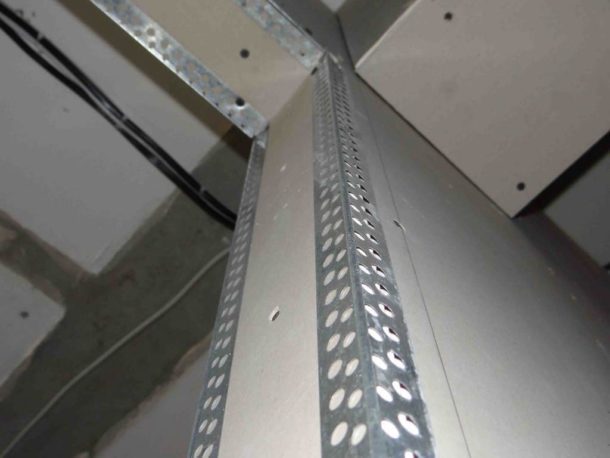We present a cheat sheet on creating conditions for climbing stairs at public and administrative facilities. What is needed to meet the requirements of the state program Accessible Environment.
The material will consider the technical means used and the conditions for their use. After studying it, you can quickly understand all the main points.
Accessibility Tasks
There must be at least 1 entrance to the building or other structure, the use of which is accessible by wheelchair. This is either a staircaseless entrance group, or a staircase with a ramp or other wheelchair accessibility.
Inside rooms with several floors, it should also be possible to overcome stairs. But only in cases where the second and higher floors are intended for visiting by the disabled.
Ramps for stairs
Telescopic ramps
They are laid out along the stairs, allowing you to lift a person on a mechanical wheelchair along it. Not available for electric wheelchairs.
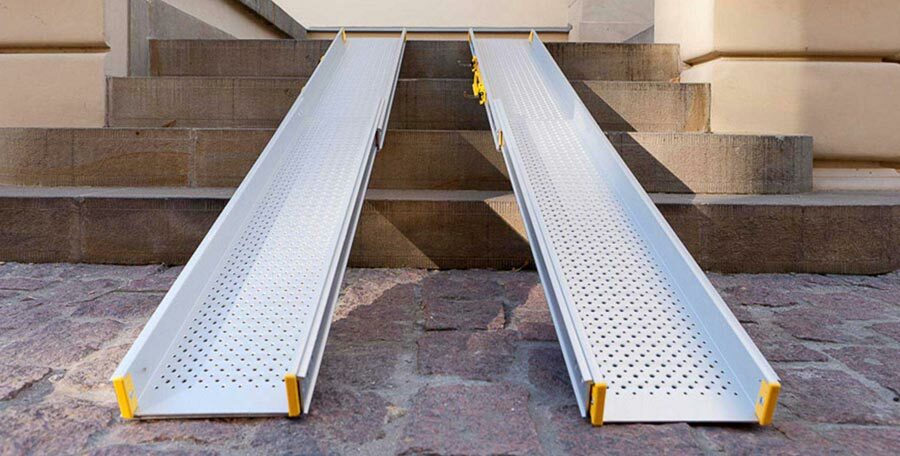
Telescopic ramps must be taken out and installed by an employee of the organization. He is also obliged to help the disabled to rise, since it is impossible or unsafe to do it on his own.
Telescopic ramps may only be used as a temporary measure. And only if it is impossible to install another device that provides the ability to independently climb the stairs.
Ramps requirements:
- They are selected according to the length of the flight of stairs.
- Must be anti-slip.
- Material aluminum, or similar in characteristics (durable, but lightweight).
The anti-slip coating can be a corrugated metal surface or a special coating that is glued to the metal.
Folding ramps
They are attached to the wall and are located parallel to it in a passive position. When activated, they are laid on the steps of the stairs, making it possible to lift a person in a wheelchair.
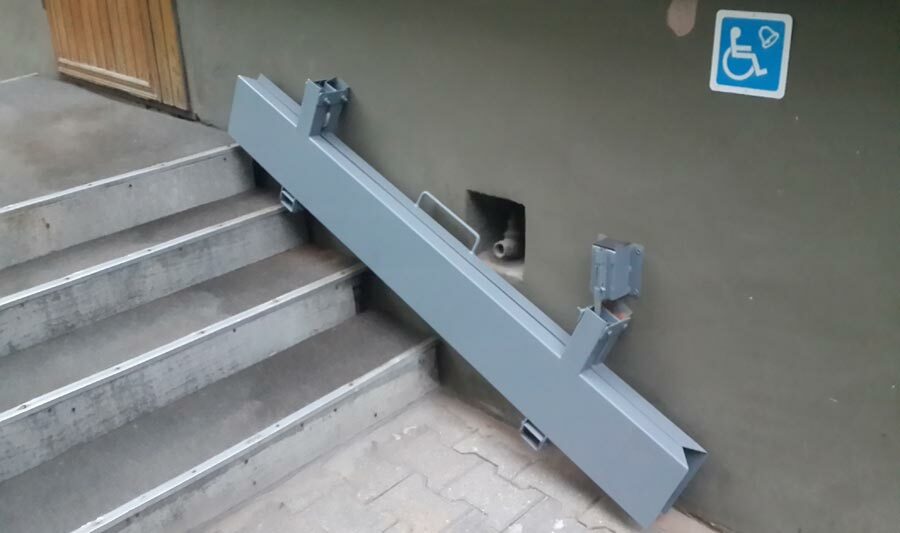
They also require the participation of an employee of the organization. And they are allowed only as a temporary measure if it is impossible to install another device.
Recommendations:
- Indoors, it is better to use aluminum structures, as the most practical due to their low weight.
- On the street, powder-coated steel products are necessary, since aluminum can be damaged by vandals or atmospheric influences.
- There should be devices on the wall to fix the ramp when not in use so that it does not interfere.
There is a minimum load on the fasteners, so it does not matter whether the structure is fixed to the wall or floor. But the wall-mounted option proves to be more practical.
Stationary ramps
Made from concrete or steel. They can be completely stationary or collapsible (modular). Allow disabled people to climb stairs on their own. The help of employees of the organization is not required.
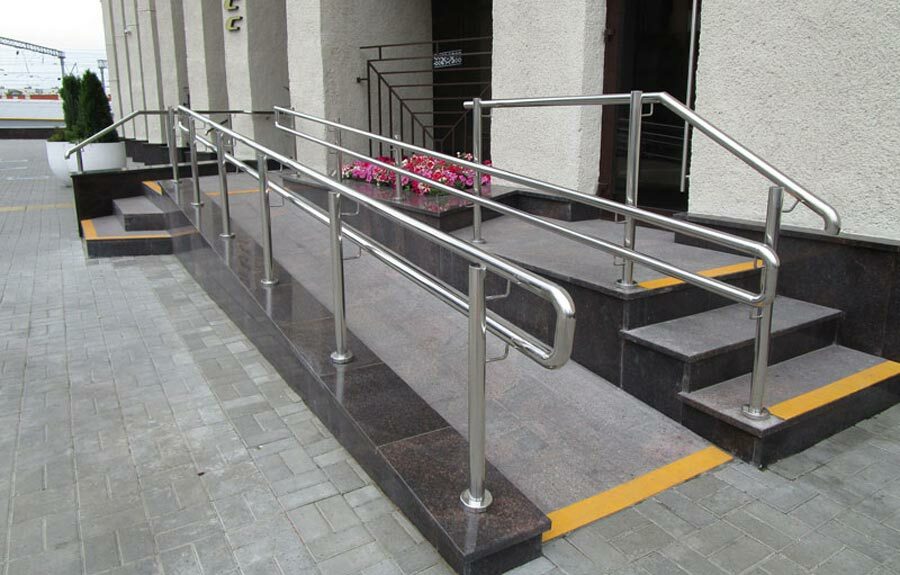
Stationary ramps are recommended and can be used permanently.
Requirements:
- The angle of inclination of the marches of the ramp is not more than 5%.
- The length of one march is not more than 9 m (if necessary, several marches are made in a longer length, connected by a turnaround platform with a width of at least 180 cm).
- The height of one march is not more than 80 cm.
- The presence of handrails on both sides of the ramp.
- Anti-slip coating.
The requirements for a stationary ramp change periodically, so before erecting, you should familiarize yourself with the current standards in SP 59.13330.2020.
A complete analogue of stationary ramps are modular designsproduced by some Russian factories.

The only difference is that they are collapsible and are not considered a capital structure. Accordingly, there are much fewer problems with their installation than with concrete stationary ramps.
Such ramps are made entirely in production, and are only assembled on site using bolted and other connections.
Stationary lifts
elevators
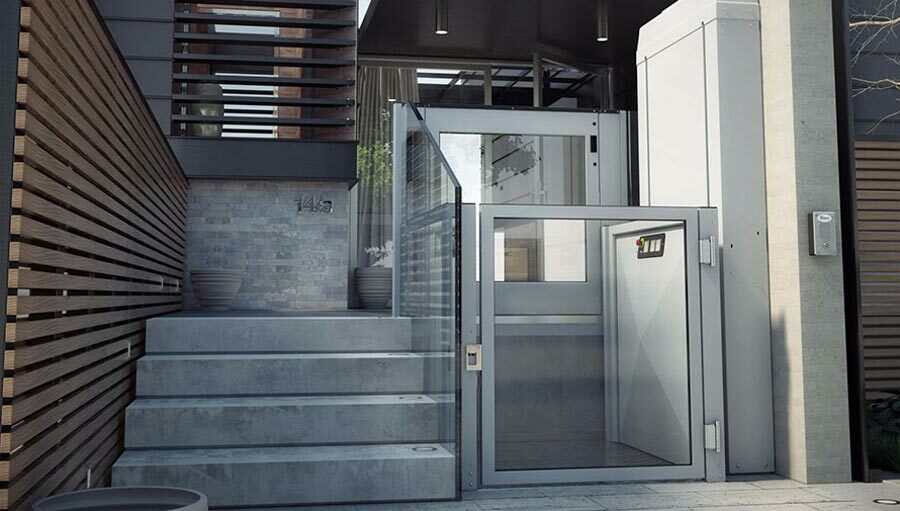
Elevators are a vertical lift with an electric drive, a fence in a circle and a door. They allow you to quickly be understood on the landing on your own. They are a complete replacement for stationary ramps.
Of the advantages - elevators are more convenient than ramps, especially in bad weather and require much less space. The best option for entrance groups where it is impossible to install a stationary ramp.
Inclined lifts
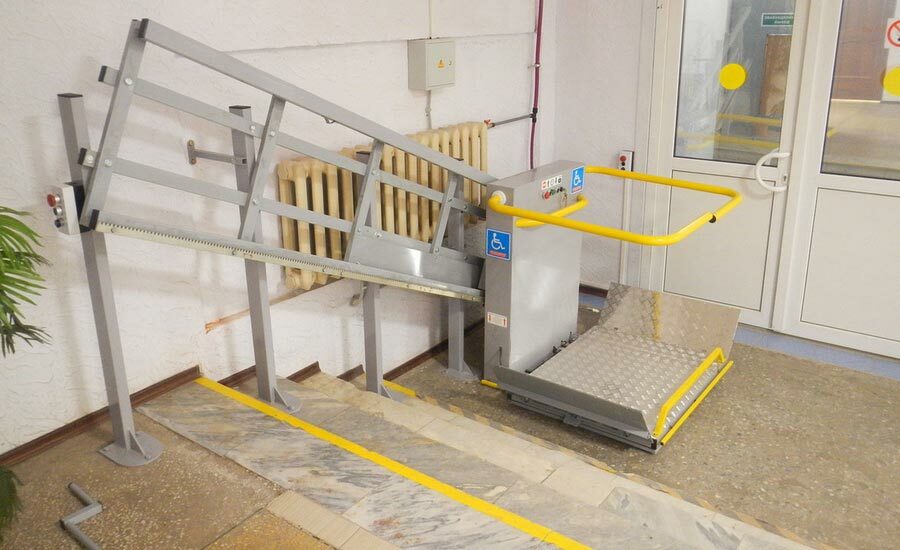
Guides are installed along the railing of the stairs, along which the platform moves. Allowing you to climb and descend on any wheelchair completely independently without assistance.
Inclined lifts differ from elevators in that they can only be used on fairly wide stairs. Since with a moving platform, there must be a place for the passage of people.
On the other hand, inclined lifts allow you to overcome stairs of almost any length and height. Which makes them more versatile. Well, to use them, instead of stationary ramps, the Code of Rules is allowed.
Mobile lifts
Crawler lifts
Mobile equipment that allows people in mechanical wheelchairs and lightweight electric wheelchairs weighing up to 50 kg to be lifted up the stairs. The operator of the lift must be an employee of the organization, since it is impossible to use it independently.
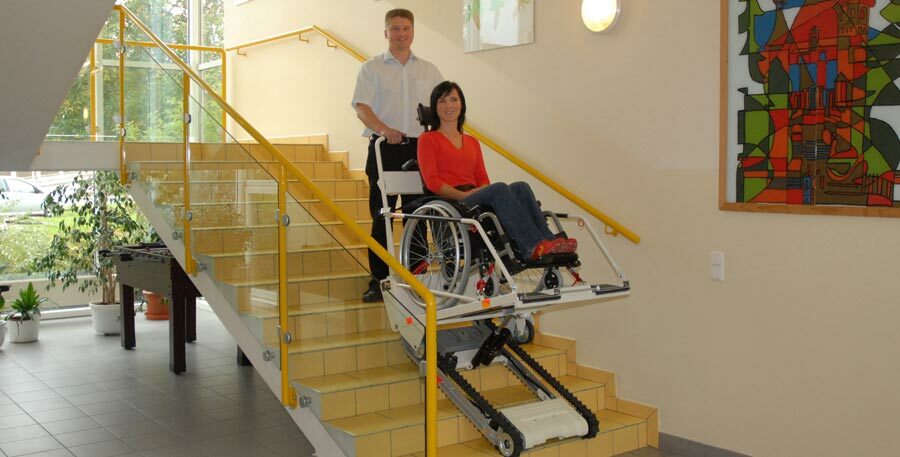
Crawler lifts are the only mobile option for stair climbers. They are often used indoors, but they are not suitable for the street, because it is not safe to use them on wet or icy steps.
As a permanent means of climbing stairs, caterpillar lifts are not suitable (only as temporary measure when it is impossible to install an elevator, horizontal lift or stationary ramp). The speed of raising and lowering is very low, so if more than 5-10 disabled people visit the organization per day, the equipment will not cope.
An analogue of caterpillar stair lifts are step walkers. However, in terms of performance, they are much inferior, so it is better to give preference to equipment on tracks.
What is a temporary measure
Some items that do not comply with the Accessible Environment Code of Practice may be used temporarily. This is allowed and not punished, but there are conditions.
- Temporarily permitted fixtures are allowed if it is technically impossible to install the recommended equipment.
Namely, stationary ramps, elevators or inclined lifts. - During the overhaul of a building / structure, it should be possible to install stationary equipment corresponding to the joint venture. That is, after a major overhaul, it is no longer acceptable to use temporary funds.
